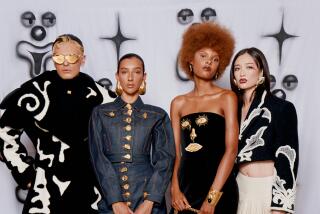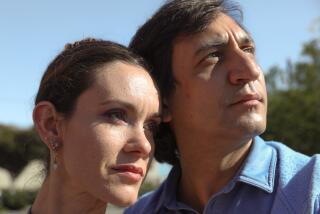Freed of London helps ballerinas put their best foot forward
Tucked away in the side streets of Mayfair, the world-famous tailors of Savile Row make gentleman’s suiting to order for businessmen, gentry, politicians, oligarchs and Saudi princes.
Six miles to the east, in Hackney, lies another temple to old-school English craftsmanship: Freed of London, makers of custom pointe shoes since 1929. In a small workshop flanked by midrise apartment blocks, a no-frills sandwich café and a betting parlor, 12 shoemakers each transform satin, canvas, cardboard, burlap and leather into 40 pairs of pointe shoes each a day.
The company was started by cobbler Frederick Freed in 1929 in a Covent Garden shop basement. Freed’s widow sold the company in 1993 to the Japanese apparel company Onward Kashiyama, but its headquarters and manufacturing are still based in London. Freed maintains its approximately 50% market share (the Los Angeles, San Francisco, Pacific Northwest, Miami, New York City, Paris Opera and Royal ballet companies all use Freed shoes) by offering traditionally made shoes with an extremely high degree of customization — something other companies, such as Gaynor Minden, Grishko, Sansha and Capezio — simply can’t afford to do. Freed shoes are also prized for the color of the satin (the company buys the seconds from its factory in Scotland so no other maker can use it) and the way they look on the feet.
The near-infinite amount of customization available is more than just vanity. Pretty as they are, pointe shoes are foremost work shoes. Every part of the shoe — even the ribbon — is there to support the dancer’s foot and help her avoid injury.
“The shoe is your instrument and becomes a part of you,” said Colleen Neary, co-artistic director of the Los Angeles Ballet, where almost all of its 22 ballerinas use Freed shoes (and can be seen during the company’s six performances of “Swan Lake” from March 3 to 31).
“You have to have the technique and the experience, but the shoe is what makes you really dance your best.”
At around $100 a pair and with a life expectancy of one performance, custom pointe shoes are mostly worn by professional dancers whose companies are footing the bill. Los Angeles Ballet budgets $50,000 per year for shoes, with each ballerina getting 28 to 30 pairs. Larger companies, such as New York City Ballet, have annual shoe budgets near $250,000.
Pointe shoes start as an unsewn upper consisting of two layers of cotton and a layer of satin. Makers then tack the material inside out onto the last — a plastic foot-shaped block. A bucket of paste, burlap triangles and cardboard are combined by hand à la papier-mâché between the two layers of canvas to build the hard toe, or box, of the shoe.
That other shoe companies use a plastic insert to make the box rather than building it up layer by layer is a point of contention for Freed factory manager Gary Brooks. “It’s like putting a plastic cup in the shoe. It won’t break down, it won’t mold to the shape of the foot, it won’t absorb perspiration.”
The width, length and overall shape of the box is a major component of each maker’s individual style. While the shoe is inside out on the last, the satin is pleated under the toe to help absorb the dancer’s body weight when she is en pointe.
After the pleating, the shoe goes to the only machine used in the process to sew the sole — cut from thick leather — to the upper. The shoe is then turned right side out and put back on the last, so the maker can shape the platform — the part the dancer stands on when she’s on her toes. The angle, size and shape of the platform depends on the dancer. “A lot of dancers prefer a platform that is tapered — that is, it goes down to a smaller platform on the bottom,” said Neary. “I always found that easier to turn with. Some dancers prefer a wider platform because it’s easier to balance. It basically depends on the width of your foot and the length of your toes.”
The final stage is carried out in Freed’s finishing department, where a shrine to Liverpool soccer great Steven Gerrard oversees the vamp being cut to the required shape (U or V) and string (or elastic) added to the binding. Ballerinas sew the ribbons on the shoes themselves as part of the breaking-in process.
Like any high-performance athlete or artist, dancers are always on the lookout for any equipment advantage another dancer might have. Neary insists that dancers aren’t superstitious about their shoes. But in his 30 years at Freed, Brooks has seen all manner of craziness. “We’ve had people order the same spec as for someone else, even though they don’t fit them, because they think they’re magic,” he said. “They squeeze their foot into a shoe that’s crippling them because they think they will dance better.”
Makers have their own stamp — a dollar sign, a key, an anchor — that they put on the bottom of each shoe they complete. “When you are young and going into a company, you try all different makers and modifications,” said Neary, “and when you get a little bit older, you get attached to your own maker and your own specs.”
That doesn’t mean, however, that ballerinas want the secret of their success (aside from the hours of practice and natural talent, of course) broadcast to their competitors.
Said Brooks, “We’ve had someone say that they don’t want the maker’s stamp on the shoe. Why would she do that? It turns out she was telling all the other girls that she had her own special maker that only made shoes for her.”
The quest for the perfect shoe preoccupies the makers as much as it does the dancers. “I’ve been doing this job for 18 years” said Pat Moran, a maker whose work is often requested. “I’ve had some top dancers — Tamara Rojo and Belinda Hatley. I still remember the times I’ve come to work and made the perfect shoe.” Spotting a promotional opportunity, he adds proudly, “tell the dancers to look for the key [his symbol]. That’s a good shoe.”
One thing Moran has never done in all the years he’s made shoes is actually go to the ballet. Partly after dealing with shoes all day, it’s a bit of a busman’s holiday. Most of the makers are also working-class East Londoners, which means that for many, the ballet is a bit girly. “It’s sort of a macho thing, said Brooks. “I started going when I turned 40. I really enjoy watching their feet and what the shoes do. It gives you a whole different view.”
More to Read
The biggest entertainment stories
Get our big stories about Hollywood, film, television, music, arts, culture and more right in your inbox as soon as they publish.
You may occasionally receive promotional content from the Los Angeles Times.





